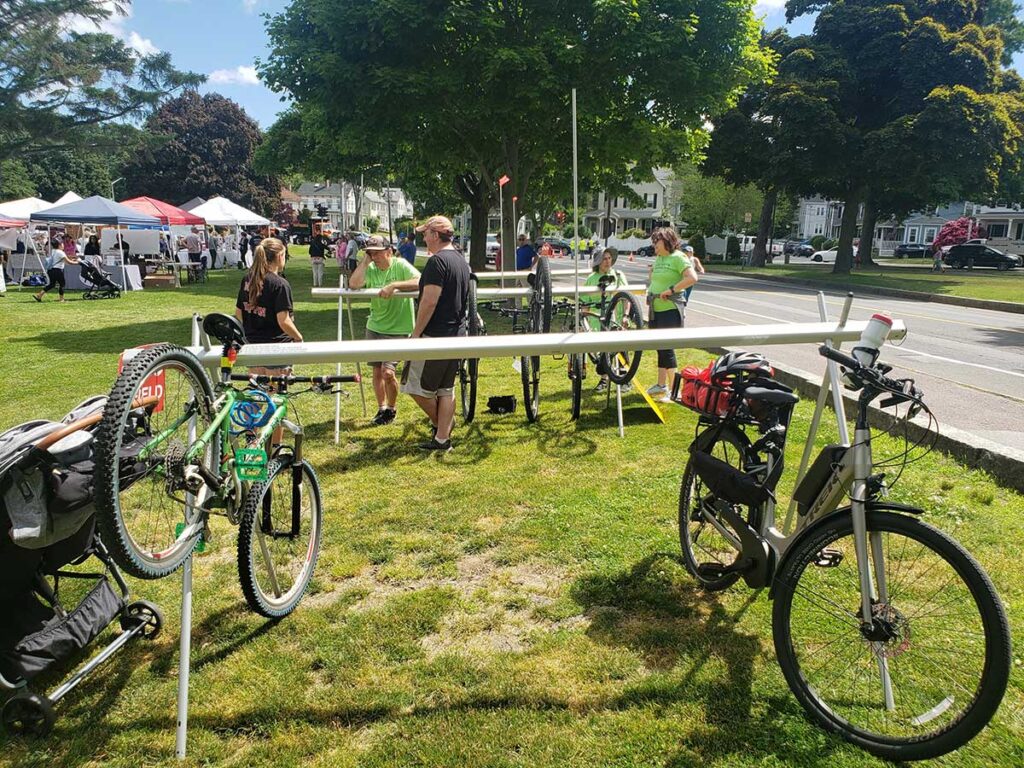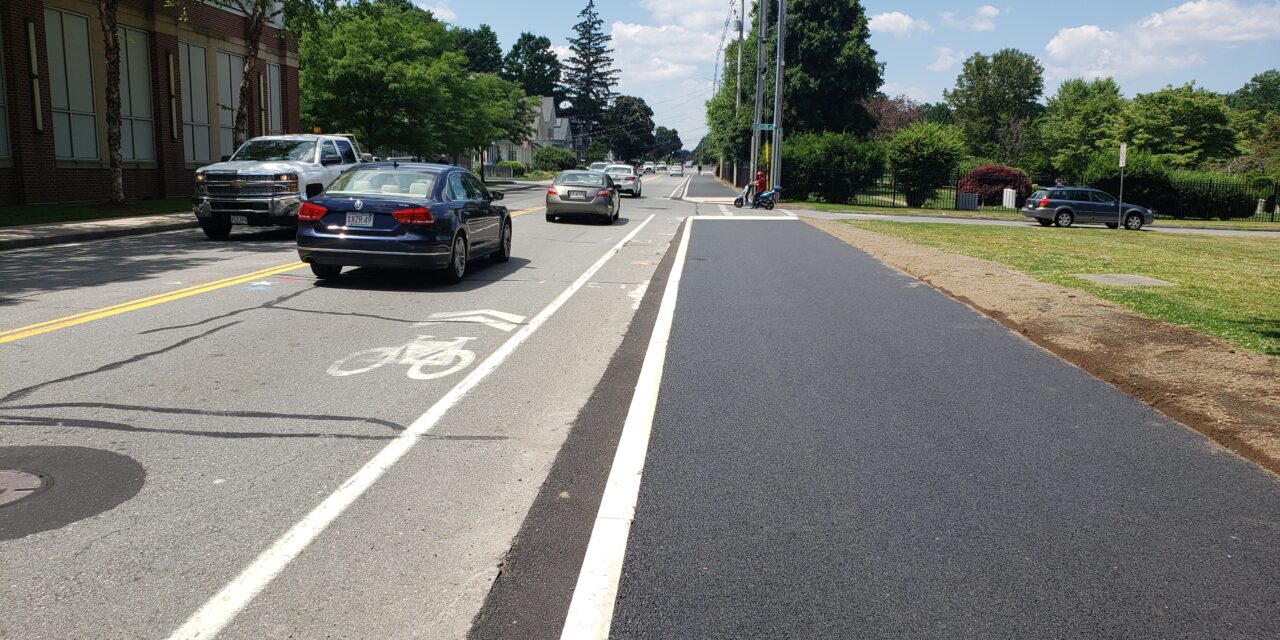
Bicyclists will soon have their own lane on North Avenue thanks to a Town Council vote on June 24, 2024 (Bicyles at the Festival by the Lake 2024, Frank Conte photograph)
By MARK SARDELLA
WAKEFIELD – There will soon be a 5 to 6-foot-wide bicycle lane on the east side of North Avenue between Veterans Field and Quannapowitt Parkway. There will also be 4-foot tall “flex posts” approximately every 40 feet to separate the bike lane from the automobile travel lanes, which will be narrowed down to 11.5 feet in each direction to accommodate the bike lane and the new, wider sidewalk.
The Town Council voted 4-3 last night to go with a North Avenue redesign that includes the bike lane with flex posts. Councilors voting in favor of the design were Jonathan Chines, Mehreen Butt, Robert Vincent and Douglas Butler. Opposed were Councilors Edward Dombroski, John Carney and Michael McLane.
The discussion began with a review of how things got to this point by Town Engineer William Renault, who noted that project originated with a MassWorks grant that included $500,000 for a “shared use path” on North Avenue.
He then discussed different options that were considered for the roadway redesign, with various widths for the sidewalk, bike lane, buffer strip and automobile travel lanes.
Early on in last night’s discussion, Councilor Mehreen Butt asserted that the Town Council had previously voted to have a bike lane on North Avenue and the only remaining question was whether to have the flex poles. But Renault pointed out that there had never been a formal vote – only a consensus of the board that he (Renault) should proceed with a roadway redesign that included a bike lane.
Councilor John Carney said that he has not felt as safe riding his bike on North Avenue since the wider sidewalk pushed him further out into the street.
“You are trying to make this work in a space where it doesn’t fit,” Carney said. “I don’t think it’s safe.”
Chairman Michael McLane questioned data often cited to show that flex poles improve safety, noting that it is often based on self-reporting by cyclists.
Due to the different roadway widths of North Avenue in various locations, Renault proposed reducing the 3-foot buffer where necessary between the bike lane and the auto travel lane.
But Chines said that he would prefer to maintain the 3-foot buffer throughout and reduce the automobile travel lane width down to 11 feet in each direction. He cited a Johns Hopkins study that showed that narrower vehicular travel lanes are safer because motorists drive slower. He maintained that the flex poles will make a difference because they are a visible barrier.
“I hope we chose the side of safety,” he said.
Councilor Edward Dombroski opposed the dedicated bike lane with the flex poles.
“We are not bound to create a bike lane,” he said. We could do sharrows.” (Sharrows are road markings indicating that cars and bicycles must share the road.)
Dombroski insisted that the primary purpose of roads is for vehicular traffic.
“Everything else has to be secondary,” he said, adding that the flex poles will produce a false sense of safety on a road where cycling is not safe. He also said that the poles will “look awful.”
Councilor Robert Vincent pointed out that if the flex poles were installed by September, that would provide several months to see how they work before they are removed for the winter (to allow for snow plowing).
But Carney said that changing things back if the experiment didn’t work would not be as simple as some seemed to think.
Councilor Douglas Butler said that if the intention was to have bike lanes, he didn’t see how it could be done without the flex poles.
But Dombroski pointed to a slide that Renault had displayed earlier showing bike lanes on Lynn Fells Parkway as an example of bike lanes without flex poles.
Chairman McLane noted the differences of opinion on the board regarding the safety issues.
“I wouldn’t put a child in that bike lane,” he said. He also suggested that the narrowed road width and forced slower speeds could give rise to road rage.
“We may be making this less safe,” he said.
Dombroski made a motion to go with a plan for the North Avenue improvements that did not include the flex poles.
Dombroski’s motion to go without the flex poles failed by a 4-3 vote.
Vincent and Chines then proposed a motion to adopt a plan that would include 11.5-foot automobile travel lanes, a 3-foot buffer (with flex poles) and a 5 to 6-foot bike lane.
Dombroski pointed out that Renault’s original design was for a 12-foot shared use path without a dedicated lane for bicycles. He noted that the bike lane evolved due to lobbying from bicycle advocates who represent a very small segment of the population.
He argued that the Town Council should be seeking the most benefit for the most people.
“We need to represent the majority,” he said. “I don’t believe this does.”
The Town Council then voted 4-3 to approve a plan that will include a bicycle lane with flex posts on North Avenue.





